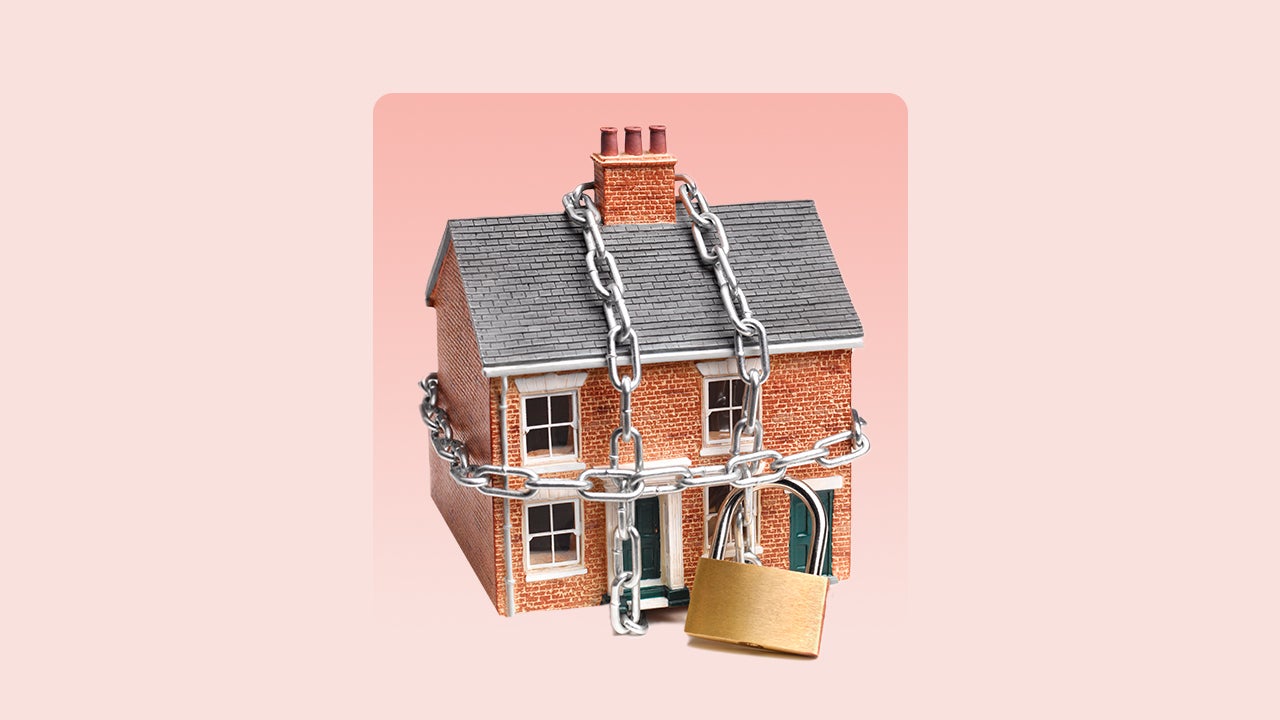Key takeaways
- Foreclosure happens when a homeowner defaults on their mortgage payments and the lender takes control of the property.
- U.S. foreclosure rates are currently at record low levels, decreasing by 10 percent in 2024.
- Experts, who had expected foreclosures to return to pre-pandemic levels by now, have struggled to explain the phenomenon.
For homebuyers or real estate investors searching for the kind of bargains often associated with foreclosure properties, the pickings have been unusually slim in recent years. Foreclosure activity has been at record low levels since the onset of the COVID-19 pandemic and still hasn’t reverted to pre-pandemic levels. In fact, according to a recent report from ATTOM, foreclosure activity actually declined by 10 percent in 2024, confounding most economists and industry analysts.
According to the Mortgage Bankers Association (MBA), an average of 1.38 percent of mortgages have historically been in foreclosure on a quarterly basis. But the organization’s Q4 2024 National Delinquency Survey shows that only 0.45 percent of loans were in default — less than one-third of normal levels. Foreclosure starts, the first legal notice borrowers receive when they default on their loan, were similarly well below historic averages at 0.15 percent.
Has something fundamentally changed, then, that now prevents foreclosures from happening? Are these new post-pandemic levels just “the new normal”? Are foreclosures a thing of the past? Probably not — the reality is much more complex.
Recovering from the Great Recession
Back in 2008, we were asking a different question: Will this wave of foreclosures ever end?
The collapse of the housing market saw home prices plummet as poorly underwritten mortgage loans led to a rush of millions of foreclosures and a flood of bank-owned properties hitting the market. But in the wake of this housing disaster came the beginning of today’s low foreclosure rates.
In 2010, Congress passed the Dodd-Frank Act, a law intended to more tightly regulate the financial industry and protect consumers. In order to do this, the government created the Consumer Financial Protection Bureau (CFPB) and gave it broad enforcement authority over the mortgage industry.
Keep in mind:
Lending guidelines issued by the newly formed Consumer Financial Protection Bureau made mortgage loans harder to get for all but the most highly qualified borrowers.
The CFPB promptly issued new lending guidelines — the so-called QM rules on qualified mortgages — which removed some of the riskiest loan provisions lenders had been offering and required them to verify a borrower’s “ability to repay” the loan. These rules apply to any loan insured by government agencies (such as the FHA, VA or USDA), as well as those backed by Fannie Mae or Freddie Mac — effectively about 90 percent of all mortgages issued.
As a result of the new rules, mortgage loans became harder to get for all but the most highly qualified borrowers, and delinquency and foreclosure rates steadily declined as the country gradually exited the Great Recession. By 2019, the percentage of loans in foreclosure had dropped to less than half its long-term average. Lenders were taking on very little risk, borrowers generally had outstanding credit and foreclosure activity was limited to households struck by a specific financial catastrophe (like job loss, divorce, illness or death).
COVID protections
In early 2020, the COVID-19 pandemic struck, and 22 million U.S. jobs were wiped out in a matter of weeks. To prevent a massive wave of mortgage defaults — and the devastating impact they would have on the housing market and the broader economy — the government issued a foreclosure moratorium for all government-backed loans. This effectively shut down most foreclosure activity: According to ATTOM, the number of foreclosure actions dropped from about 493,000 in 2019 to just 151,153 in 2021.
Part of the reason for the decline was a revolutionary forbearance program that, along with the moratorium, was part of the government’s CARES Act. This program required mortgage lenders to allow borrowers who requested a forbearance due to COVID-related financial hardship to forgo making mortgage payments for up to 360 days without interest, penalties or late fees, and without damaging their credit record.
Over 8 million borrowers took advantage of this program, which may have prevented millions of unnecessary foreclosures during the pandemic. In fact, the forbearance program accomplished more than its creators could have hoped for. According to MBA data, just over 80 percent of the borrowers who exited the program did so successfully — by paying off their loan, having their loan reinstated or entering into a loan modification or loss mitigation program with their mortgage servicer.
Strong economy = fewer foreclosures
Once the foreclosure moratorium officially ended in the summer of 2021, the expectation was that foreclosure activity would begin to climb back up to at least pre-pandemic levels, and perhaps even higher.
Foreclosure activity did begin to tick up in 2022, with ATTOM documenting over 324,000 foreclosure actions that year, and slightly more again in 2023. But rather than continue that gradual reversion to the mean in 2024, the numbers took a step back, declining by 10 percent to just over 322,000 foreclosure actions. While this surprised most economists and forecasters, there are a number of reasons — somewhat obvious in retrospect — for this reversal.
First, the U.S. economy continued to grow, in spite of ongoing concerns about a possible recession. Job growth was very strong, with the economy regaining all jobs lost during the pandemic, plus millions more, and unemployment rates near historically low levels. In fact, there were more jobs available than there were people looking for work, which drove wages higher. MBA data shows there’s a strong correlation between unemployment rates and mortgage delinquency rates: A five-year streak of more jobs, higher wages and low unemployment has resulted in historically low mortgage delinquency rates. Borrowers simply aren’t missing their payments.
Second, the run-up in home prices since 2020 has been extraordinary: Home prices have risen exponentially, delivering an unprecedented amount of equity to homeowners. While equity alone doesn’t prevent a borrower from becoming delinquent on payments or defaulting on a mortgage, it can provide a cushion for homeowners who’ve encountered a temporary financial setback. Those borrowers can often tap their equity or sell their home and collect that equity rather than risk losing it to a foreclosure sale.
And finally, thanks in part to lessons learned during the Great Recession, mortgage servicers have more loss-mitigation options today than at any time in history. And they are making these programs available to help borrowers avoid foreclosures: Far fewer mortgage delinquencies transition into foreclosure now than before, because of the work servicers are doing to help get borrowers back on their feet.
Are more foreclosures on the horizon?
Nothing lasts forever, and today’s unusually low level of foreclosure activity probably won’t be an exception. Market conditions are changing in ways that suggest we’ll start to see foreclosures back at pre-pandemic levels in the near future.
The economy is projected to slow down over the next few years, with a corresponding rise in unemployment. Household debt exceeded $18 trillion in the final quarter of 2024, according to the Federal Reserve Bank of New York. Homeowners are also burdened by recent hikes in property taxes and soaring insurance premiums.
And the regulatory environment will likely be a little less accommodating to borrowers, as the FHA has tightened up its loss-mitigation guidelines, and the future of the CFPB is uncertain under the Trump administration.
None of these factors suggests an oncoming foreclosure tsunami. Foreclosure activity is likely to increase a little bit, but still remain below historical averages. And this is good news: Low foreclosure rates are good for the economy, good for the housing market — and good for homeowners.
Read the full article here





